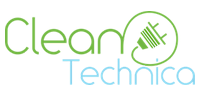 There goes Texas again. European researchers are talking up the advantages of compressed air energy storage, and a Houston startup called Apex-CAES has already jumped the gun with big plans for a new compressed air system near the city of Palestine, Texas. If all goes well with the first system Apex has plans for more, and Texas can kiss its fleet of aging coal power plants good-bye.
There goes Texas again. European researchers are talking up the advantages of compressed air energy storage, and a Houston startup called Apex-CAES has already jumped the gun with big plans for a new compressed air system near the city of Palestine, Texas. If all goes well with the first system Apex has plans for more, and Texas can kiss its fleet of aging coal power plants good-bye.
The rise of compressed air energy storage (CAES) also complicates the picture for natural gas power plants and large scale lithium-ion battery storage, so let’s take a look and see what’s going on with that.
The key factor making CAES economical in Texas is the state’s booming wind industry. Apex explains that it will take advantage of low cost (as in, practically freesometimes) off-peak power from wind turbines spinning at night.
Cheap wind power, and the state’s unified wholesale electricity market, provide Apex with the price differential that will turn a profit.
Low cost natural gas also factors in, since the system requires compressed air to be heated during peak demand periods and other times (more on that in a minute). According to Apex, though, CAES is more economical than conventional gas power plants, and uses far less gas.
Here’s the breakdown on emissions from Apex:
CAES energy production results in 40% fewer emissions per MWh than a combined cycle gas turbine, and its ancillary service production yields 98% fewer emissions per MWh.
Apex also points out that the system does not transfer energy from fuel to steam, so it requires “a fraction” of the water used in conventional power plants.
That should make natural gas stakeholders nervous. Right now cheap natural gas is the driving force pushing coal out of the power generation market, but low cost wind and solar are beginning to compete with gas in some areas, and the U.S. Department of Energy is working toward a grid modernization strategy that includes a growing share of renewables.
Compressed air storage could give renewables the edge they need to start claiming bigger chunks of the power market and accelerate the transition out of fossil fuels.
That could make lithium-ion battery stakeholders nervous, too. According to Apex, the cost advantages of CAES over large scale Li-ion arrays are significant:
Cost of storage for CAES is $18/kWh, versus $435/kWh for a lithium-ion battery.
CAES operating life of more than 30 years is three times that of a lithium-ion battery, resulting in dramatically lower annualized costs.
One additional advantage is that CAES is essentially an underground operation. Apex anticipates that surface “disturbance” can be kept as low as 10 acres for a 317 megawatt CAES system.

Recent Comments